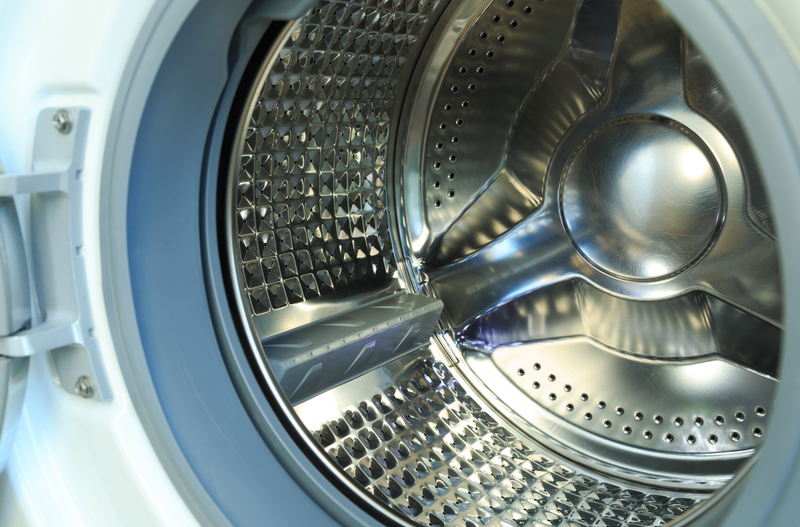Pet Owner's Guide: 10 Steps to Defur Your Carpet
Posted on 19/09/2025
Pet Owner's Guide: 10 Steps to Defur Your Carpet
Are you constantly battling pet hair embedded in your carpet? Whether you have a playful pup or a graceful feline, pet hair can swiftly take over your floors, making them look less than pristine. This in-depth guide on how to defur your carpet will offer actionable steps for pet owners determined to maintain a clean, inviting home.
Understanding the Challenge: Why Pet Fur Accumulates on Carpets
Carpets naturally attract and trap debris, including pet fur. The fibers in carpets act like Velcro, gripping onto loose hair that your furry friends shed daily. Certain breeds shed more than others, some pets have seasonal shedding, and high-traffic areas can make the situation worse. Tackling this issue can seem daunting, but with proper methods and tools, you can restore your carpet's appearance and maintain a fur-free living space.

Comprehensive Guide: 10 Proven Steps to Remove Pet Hair from Carpets
1. Prepare Your Cleaning Arsenal
- Gather key tools: vacuum cleaner with a pet hair attachment, rubber gloves, squeegee, carpet rake, sticky lint rollers, and specialized pet hair removers.
- Choose a suitable time for cleaning when your pet won't interrupt the process.
- Move furniture as needed to reveal all hairy areas of the carpet.
Preparation is crucial. Having all the necessary equipment on hand before beginning will save you time and ensure a more effective carpet defurring experience.
2. Vacuum Thoroughly--With the Right Attachments
- Use a vacuum cleaner designed for pet hair. These often have stronger suction and specialized rollers.
- Attach the dedicated pet hair or turbo brush.
- Vacuum slowly in overlapping passes to pick up as much fur as possible.
- Don't forget to go "against the grain" to lift stubborn hair from deep within the fibers.
Regular vacuuming is fundamental, but with the proper attachments and patience, you'll pull out significantly more fur, making this the cornerstone of any defurring process.
3. Invest in a Carpet Rake or Pet Hair Remover
- Use a carpet rake to loosen and collect pet hair from the fibers.
- Manually comb over the carpet, focusing on corners and high-shedding spots.
- Carpet rakes are especially helpful before vacuuming, bringing hidden fur to the surface and making it easier to vacuum up.
A carpet rake or dedicated pet fur remover is invaluable for persistent fur. These tools can double or triple the effectiveness of your pet hair removal efforts.
4. Rubber Gloves: The Low-Tech Game-Changer
- Put on a pair of rubber gloves and dampen them slightly.
- Run your gloved hands over the carpet, and fur will clump together due to the glove's friction.
- Collect the fur into a ball and dispose of it easily.
This easy trick is one of the most effective manual methods to defur your carpet--and it's also incredibly satisfying!
5. Squeegee Success: An Odd But Effective Solution
- Use a window squeegee (preferably with a rubber blade).
- Drag it across the carpet; the rubber pulls fur from deep inside the fibers to the surface.
- Work in straight lines for best results.
Surprisingly, a squeegee is a little-known hero for removing embedded pet hair from carpets and can reach places other tools might miss.
6. Sticky Solutions: Lint Rollers and Tape
- Roll a large lint roller over the carpet.
- For stubborn spots, use strong packing tape wrapped around your palm (sticky side out) to dab up lingering hair.
While best for small patches or stairs, sticky rollers are great for targeting high-shed zones or giving a final polish after other removal steps.
7. Try Fabric Softener--A Surprising Assist
- Mix a solution of one part fabric softener and three parts water in a spray bottle.
- Lightly mist over the carpet, then let it dry for a few minutes. This releases static, making fur easier to lift.
- Vacuum or wipe away the loosened fur.
Fabric softener reduces static cling, a major culprit in fur sticking stubbornly to your carpet. However, always test on a hidden spot first to avoid discoloration.
8. Enlist the Help of a Steam Cleaner
- Use a carpet steam cleaner (you can rent or purchase one).
- Steam helps lift embedded fur and sanitize the carpet at the same time.
- Allow the carpet to dry, then vacuum thoroughly. You may be shocked at what appears!
Steam not only removes pet hair but also eliminates odors and kills bacteria, ensuring your carpet is not just fur-free but hygienic too.
9. Establish a Preventive Grooming Routine
- Brush your pet regularly, especially during shedding seasons.
- Bathe them as per your vet's advice to control excess shedding.
- Use grooming tools designed to minimize loose hair before it reaches the carpet.
Preventing pet hair accumulation is more effective (and less time-consuming) than constantly fighting it. A regular grooming schedule is your first line of defense.
10. Adopt a Maintenance Plan for Fur-Free Carpets
- Vacuum at least twice a week, and more frequently in high-shedding seasons.
- Deep clean carpets monthly with either a commercial machine or a professional service.
- Encourage pets to rest on washable mats placed on high-traffic areas or their favorite spots.
- Enlist family members to help maintain a fur-free carpet by sticking to a schedule.
Consistency is key to managing pet hair long-term. By staying ahead of the fur, you'll keep your home cleaner, more hygienic, and more welcoming.
Bonus Tips for Cat and Dog Owners
What About Allergies?
If you or someone in your family suffers from pet allergies, maintaining a fur-free carpet becomes even more important. Invest in a HEPA-filter vacuum, regularly wash curtains and bedding, and use air purifiers to minimize allergens in the home.
Stain and Odor Prevention
While dealing with fur, you may also encounter stains or odors from your pets. Consider enzymatic cleaners for stains and regularly refresh your carpet with baking soda before vacuuming to neutralize lingering smells.
Choosing the Best Defurring Tools for Your Home
With so many cleaning hacks and products on the market, it's essential to find what works best for your particular carpet and pet. Here are some recommendations:
- Robust vacuum attachments: Great for plush or thick carpets.
- Manual methods (gloves, squeegee): Perfect for small areas and stubborn fur collections.
- Carpet rake, lint roller: Ideal for runners, stairs, and corners.
- Steam cleaner: Unbeatable for deep cleansing, sanitizing, and removing odors along with fur.
Don't rely on just one method--mix and match these techniques to defur your carpet effectively.

Frequently Asked Questions: Tackling Pet Fur on Carpets
- How often should I
defur my carpet ?
At least once a week for low-shedding pets, and several times a week during heavy shedding periods or if you have multiple pets. - What's the best vacuum for pet hair on carpets?
Look for vacuums with HEPA filters, strong suction, and rotating brushes designed for pet hair. Some popular brands include Dyson, Shark, and Bissell. - Can professional cleaners help with pet fur?
Absolutely! Professional carpet cleaners use powerful tools and deep cleaning techniques that can eliminate fur and odors you might miss with household equipment. - Are there carpets that resist pet fur?
Tight-weave, low-pile carpets are less likely to trap fur compared to plush, high-pile carpets. Some carpets are also marketed as "pet-friendly" with treatment for easy cleaning.
Conclusion: Embrace a Fur-Free Home Despite Your Furry Companions
Pet hair doesn't have to dominate your living space. By following these 10 expert steps to remove pet hair from your carpet, you'll enjoy a cleaner, fresher home--without giving up cuddling with your pet. The secret lies in consistency: the more regularly you defur your carpet, the easier each session becomes.
Enjoy your home--and your pets--in harmony!
- Defur your carpet regularly for the best results.
- Experiment with these pet hair removal tips to find what suits your home and pet.
- Remember, a clean carpet is a happier environment for both humans and pets alike!
Share your favorite methods to defur your carpet in the comments below--fellow pet owners would love to hear your tried-and-true tips!




